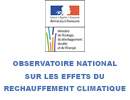Effectiveness and Acceptability of Commitment Scenarios on Greenhouse Gas Emission Reduction
Effectiveness and Acceptability of Commitment Scenarios on Greenhouse Gas Emission Reduction
This research project is aimed at examining the different commitment scenarios for reducing greenhouse gas emissions over the 2012-2030 period, from the dual perspective of effectiveness and acceptability. It is aimed at better understanding the economic and environmental consequences of the many international coordination possibilities and at looking for rules for attributing the reduction objectives most likely to garner widespread support, in particular from developing countries and the United States.
To this end, the project will broach both the quantitative issue of the reduction-volumes to be negotiated and the institutional problem of establishing a coordination rule as broad as possible.
The project is based on the idea that future commitments will not be independent from the vision that countries have of the net balance of climate policies, meaning their estimate on its related damages and benefits. The future of the negotiations will depend on the soundness of the various rules suggested with regard to uncertainty. For this reason, we will perform simulations on each of the emission-reduction pathways, addressing, in each case, the uncertainties on abatement costs, damages and future economic growth, using a set of assumptions that encompasses many of the current estimates on abatement costs and damages. Effort-allocation rules will be grouped together based on two polarly-opposite systems: a “Convergence and Shrinking”-type rule, based on a final reduction objective, and a rule indexed against performance, referred to as the “Jacobi Rule”. Assessment on each simulation will take into account environmental efficiency, cost allocation and the acceptability of the rule tested. The said acceptability will be assessed on the basis of two criteria: a normative criterion, based on a certain conception of equity, which will consist of comparing the results of simulations to a situation in which a well-meaning planner would behave in accordance with the selected conception of equity; and a pragmatic criterion, taking note of the effects (both macro- and micro-economic) arising from emission-reduction requirements. Lastly, we shall consider a variety of scenarios regarding compliance with commitments, either positing full compliance with the said commitments, or incorporating the possibility of non-observance currently foreseen.
The aforementioned simulations shall make it possible to determine the commitment rules that would maximise the negotiating area, in particular by lowering vulnerability to uncertainties, and minimise the risk of certain parties’ shirking their responsibilities in attaining the environmental objectives. To supplement this analysis, we shall look, in the final section, at the hybrid and fragmented regimes, which would make it possible to extend the cooperation into transitory or permanent mechanisms. More specifically, we shall take into account the co-existence of three possible regimes: binding commitments with optional postponement, non-binding quotas, and participation in the clean development mechanism without commitment.
| Coordinators |
Jean-Charles Hourcade, CNRS – CIRED |
| Funding |
MIES/ADEME
|
| Budget |
60 000€ (including tax)
|




